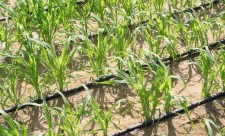
Drip watering with your own hands. Method of drip irrigation Plot.
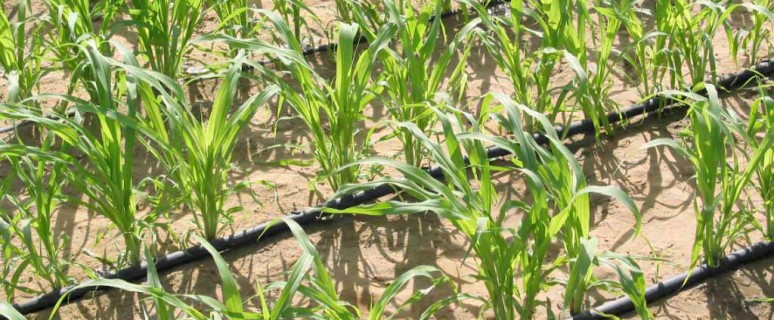
For the first time, watering the drip method was used in the middle of the last century. This irrigation method was initially used only on an industrial scale. Its result was so positive that the drip of watering quickly spread. They began to use not only in large farms growing products on a commercial basis, but also the usual owners of gardens and gardens.
The advantages of drip iris
One of the main advantages of drip irrigation is the possibility of moisturizing the soil directly under the root of the plant. As a result of this irrigation, it receives the required amount of water, but the surrounding land remains dry, which eliminates the wetlability of the site. Weeds grow not so "violently", because they lack watering and contain a plot in order becomes easier. The absence of an earthen crust, which is usually formed after watering in other ways, allows the roots to "breathe" and there is no need to constantly loose the soil.
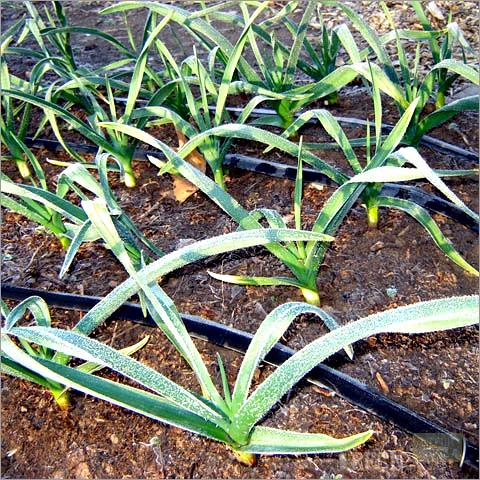
Economical water consumption is another positive moment when using a drip irrigation method. In comparison with other methods of watering, it decreases by 20-80% - depending on the type of soil, the device of the irrigation system, climate and the type of plant grown. At the same time, they all receive the same amount of moisture - it is distributed evenly throughout the number of seedlings.
Fertilizers made in dissolved form along with watering under the root of the plant are absorbed faster and more intense. In addition, it allows you to reduce their flow - nutrients will arrive in the required quantity for the purpose, and will not be spent in vain, on the cultivation of grass.
The development of the root system with this method of irrigation becomes more active. It focuses in the irrigation zone, more urine and has many active branches.
Leaves of plants with drip iris remain dry, which reduces the risk of their burns and the spread of various diseases.
With this method of irrigation, work is greatly simplified by plant care. No longer need to carry the hose, stacking hands, monitor the water level in the grooves. The main work lies in the daily cleaning of filters.
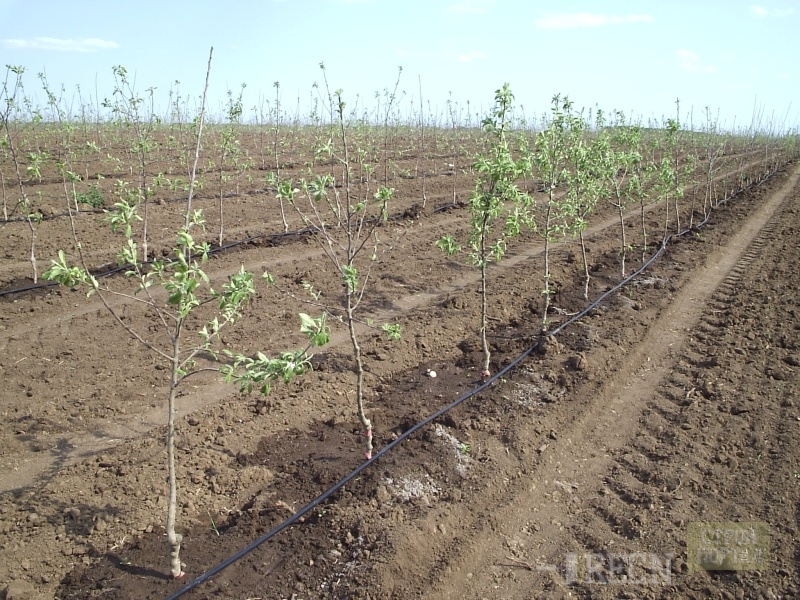
Highlights of the benefits of drip irrigation:
- water enters the root of the plant;
- the absence of an earthen crust and a site wetland;
- economical water consumption;
- uniform watering;
- effective plant nutrition;
- intensive development of the root system;
- protection of plants from diseases;
- the possibility of conducting watering at any time of the day;
- reducing labor costs.
Organization of a drip irrigation system with their own hands
It seems that it seems to organize drip irrigation systems with their own hands, I have done a sharp item in the hose, opened the water and let yourself drip out. But in this case, at the beginning of the line, the water will go through a jet, and at the end its number will decrease to rare drops. In order for the plants on time and in the required amount of moisture, but if you find it well to consider the organization of this method of irrigation, the plants will get moisture on time and in the required quantity.
Elements of the irrigation system
The source of water supply is the main thing that you must have to create a drip irrigation system. It can be a water supply, well or any container raised to a height of 1.5 meters. The reservoir used should be closed, otherwise the garbage fell into it and algae can score droppers.
Rapid pipe with a diameter of 32 mm. In the simplest design of the irrigation system, even the usual garden hose is used. It should be a light-tight and hard enough - otherwise the strain of the pipe from heating on a sunny day may occur.
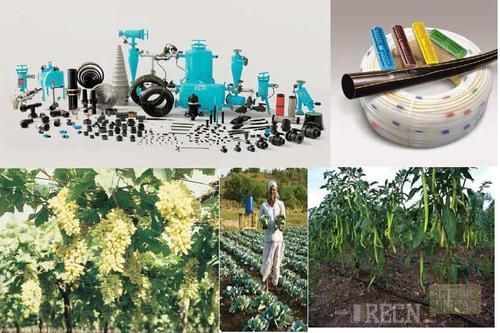
Water purification filter is a mandatory element of the irrigation system. If you save on it, after a couple of years there will be a need to replace all hoses. There are several types of filters - vortex, disc and mesh. The last option is the cheapest, but, organizing a simple drip watering with your own hands, it is quite possible to do. Choosing such a device, pay attention to the grid - its cells should not be more than 130 microns. Any impurities are larger in this size will be detained before entering the irrigation system, and it will work without interruptions.
Drip ribbons - Polyethylene tube Ø16-20 mm, in which droppers are mounted.
Organizing drip watering with their own hands , It is impossible to do without fittings connecting the brewing pipe and tapes. They can be with cranes - to control the time and amount of moisture, and without them.
In addition, when installing the irrigation construction, the connecting fittings of another type are used - tees, couplings, splits, corners, plugs, etc.
Dropper
In order for watering uniformly and in a given quantity, two types of droppers were developed - external and internal.
Built-in droppers
Built-in droppers are placed inside the hose along its entire length. Such structures are produced on the factories and have different parameters:
- hose diameter - 12-25 mm;
- device performance - 0.5-6 l / h;
- distance between droppers - 20-150 cm;
- hose thickness - thin and thick walls;
- the shape of droppers is oval or cylindrical.
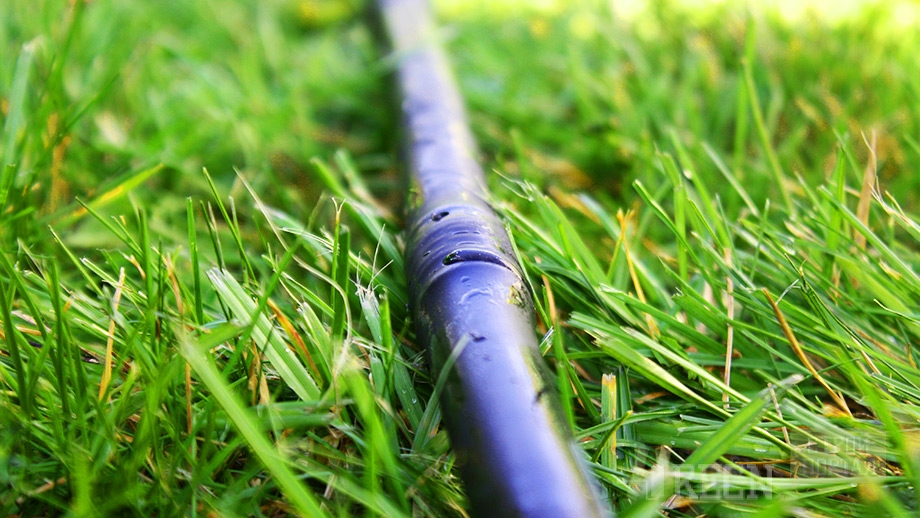
Tolstone or rigid drip tubes work well on a complex relief and on long rows. Operating pressure - 0.5-4 atm. Thin-walled (0.12-0.6 mm) tapes can work at 0.2 atm.
In the design of the dropper includes:
- valve;
- filter;
- the labyrinth - water passes through it.
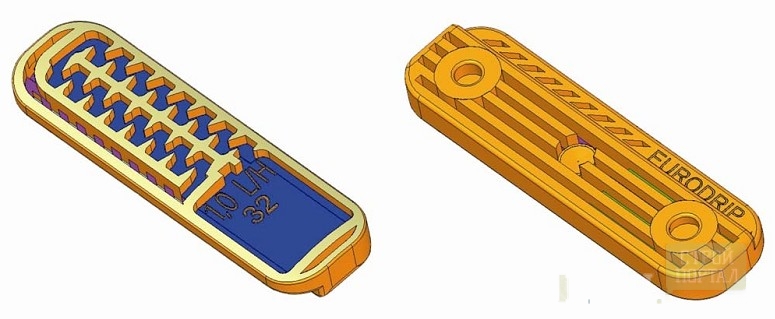
Outdoor droppers
There are many varieties of outdoor droppers:
- with fixed or adjustable amount of water;
- uncompensated for pressure design - a simple labyrinth;
- compensated droppers - with silicone membrane.
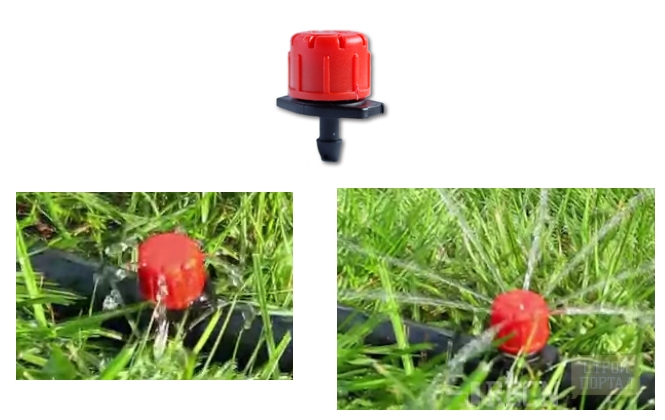
Adjustable products allow you to configure the uniform thread manually. In the simplest of them, this is done with the help of a thread - they are designed for 0-6 l per hour. At a short distance, all the droppers put on one number of turns, but with a longer plot it must be borne in mind that by the end of the pipe the water pressure may fall.
There are droppers that are capable of pouring up to 70 liters of water in an hour. They have several holes on the lid, and with a large pressure it turns out rain watering. The flow of water is easily controlled by the rotation of the cap of the device.
Dropper with fixed water outlet
Unregulated devices are designed for a specific pressure range and have a fixed water consumption, which is measured by liters per hour.
Uncompensated droppers - depend on pressure and are not intended for long distances, since it falls at the end of the row, and the uniformity of irrigation will not succeed. But perfectly suitable for small rows.
Compensated devices have inside the silicone membrane. When the water pressure decreases, the valve completely cuts out its output. Watering is interrupted. Operating pressure dropper 0.4-3.5 atm. When this indicator is reached, the water again starts to drip. It produces three types of devices - by 2, 4 and 8 l / h.
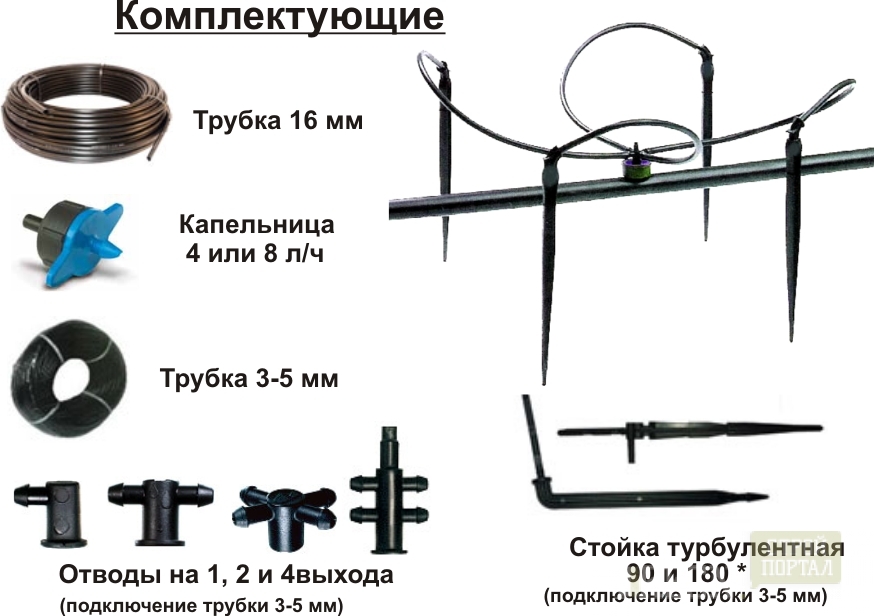
For watering several plants, a dropper with ramifications, like "Spider". This design consists of a 2 or 4 output adapter, microtubes, pegs and directly the device itself. It is used both for watering several plants and for water intake to one root system, but from different sides.
Installation of droppers
Despite the variety of outdoor droppers, they are all equally mounted into the pipe. In its wall, a special selection or hole pair Ø3 mm is made a hole in which the device is inserted. In order for water to not leak, it is necessary to comply with some conditions:
- The hole must have smooth edges. That is why it is impossible to use the drill to work. In the absence of a special breakfast, the hole is made by the nail of a suitable diameter with an exactly sharp end.
- The pipe material must be elastic - only in this case it will firmly fit to the dropper body. The ideal option, proven over the years - tape of drip irrigation, but with a neat installation it is possible to use hoses and PND pipes.
- The dropper is inserted into the hole immediately after piercing. The higher the pipe heating during the installation, the better its material will facilitate the camera fitting. To do this, you can use a simple hairdryer.
Sensors, controllers, valves
The automatic drip irrigation system requires special devices:
- Controllers - single and multichannel mini-computers, watering controlling plants. They can work from batteries or alternating current. By setting the device a specific program, you can be sure that watering will occur in the time allotted for this. Multichannel controllers are more complex in circulation and can control 8 irrigation zones. Single-channel devices do not require special experience when setting up, but they automate only one irrigated area.
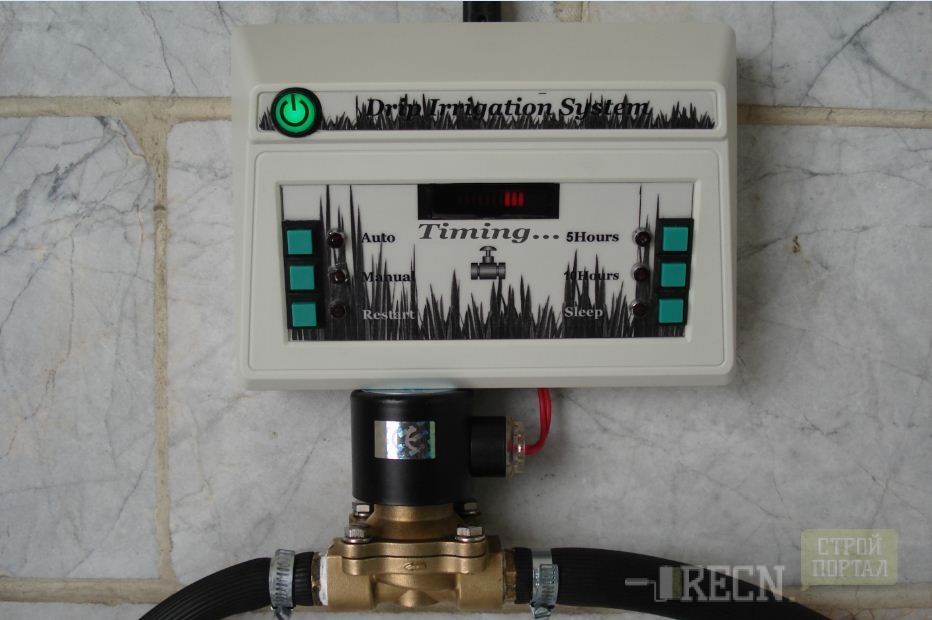
- Sensors are used in some types of controllers, depending on the settings and environmental conditions allow to terminate irrigation. This function is useful during rain or decrease in temperature.
- The solenoid valve works on the command from the controller and serves to overlap or start water to certain irrigation zones.
The organization of drip irrigation with their own hands consists of two stages - the design of the system and its installation.
Designing of drip irrigation
Before proceeding to the calculations of the consumption on paper, the site plan is applied - it marks the location of the garden, the zones of drip irrigation and the daily water consumption is indicated for each of them.
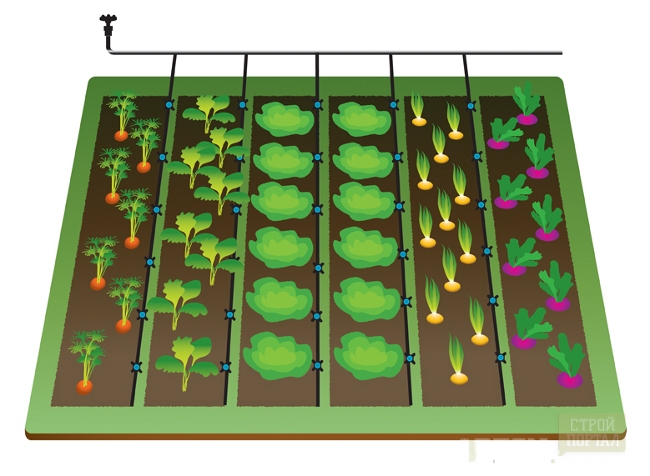
Then the calculations of water consumption are performed. For example, we take the size of a plot of 20 × 10 m and position 150 potato bushes and 2 rows of cucumbers. Drip watering site will share two systems.
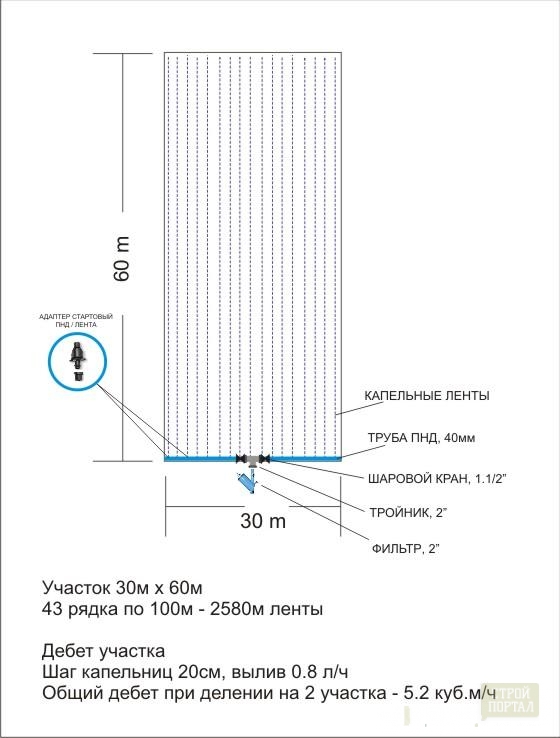
"Potato" design should ensure watering each plant based on the daily rate - 2 l of water on the bush. Total there will be 300 liters (2x150) to this zone. Droppers are installed on 10 meter tapes with a break of 20 cm. 10: 0.2 \u003d 50 droppers on each of them. For this number of potatoes, there will be three tapes 50x3 \u003d 150 devices. Each of the droppers on average consumes about 2 liters of water per hour. 150x2 \u003d 300. So, in order for the potatoes to get the required amount of moisture, the system should work the hour per day. Water consumption - 300 liters.
The system "cucumbers" is calculated in the same way: 2 rows of 10 meters of tape. . Dropper located in the same - 20 × 10 cm 2: 0.2 \u003d 100 devices need to irrigate the same number of cucumbers. We highlight the plants of 1.5 liters of water per day. Each dropper consumes 2 liters per hour. 1.5x60 (min): 2 \u003d 45 minutes per day - time watering cucumbers. 1.5x100 \u003d 150 liters of water is necessary for their irrigation.
From the above calculations you can see, one system should work 45, and the second 60 minutes per day. The amount of water required for irrigation of the two zones - 450 liters.
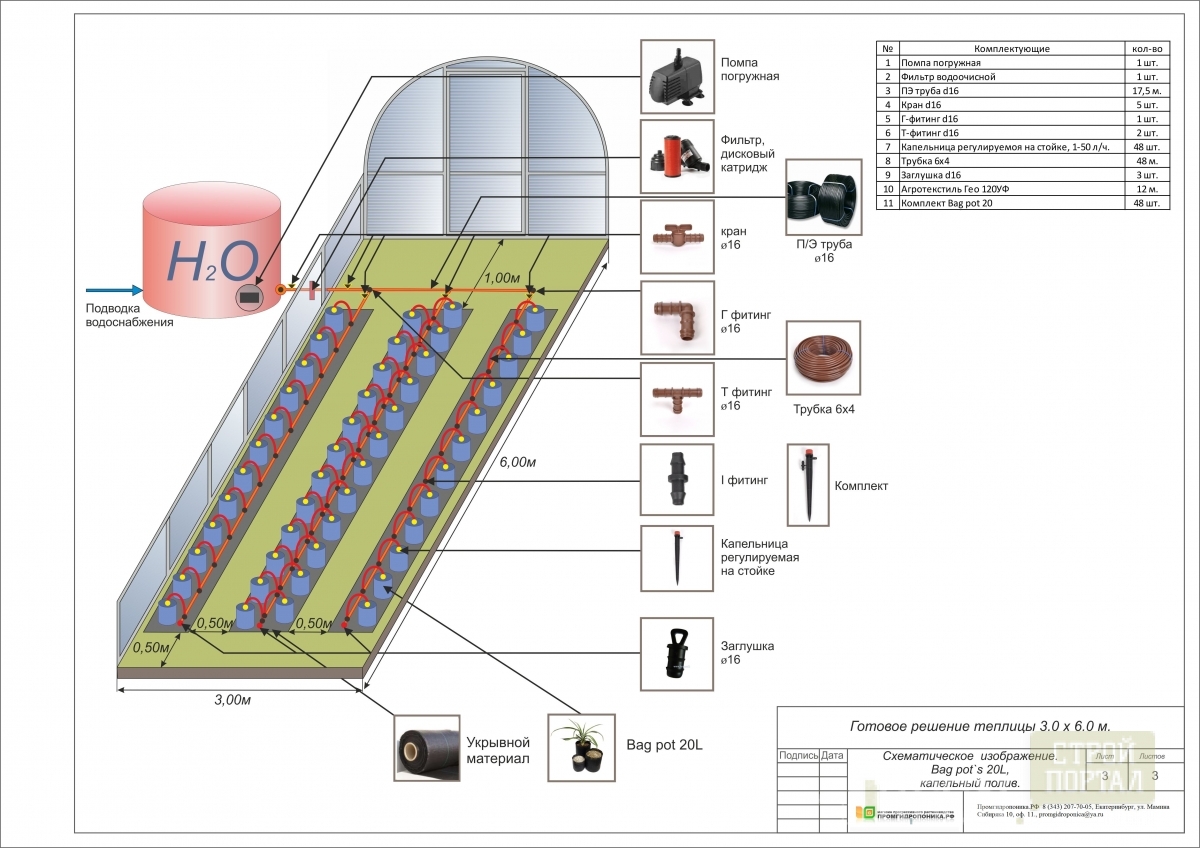
The next step will be the design of a plan of the future system of drip irrigation. He observed all the necessary parts of the pipeline. This will allow to determine the optimal amount of purchased items.
Installation of drip system
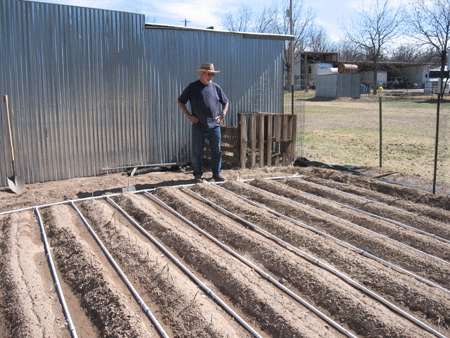
In accordance with the system up to a dilution tube makes a mark in the future locations of the holes for attaching the drip tape. They must be placed strictly in one plane. Then Ø14,5 mm drill holes are made. The tube is rigidly fixed vise desirable.
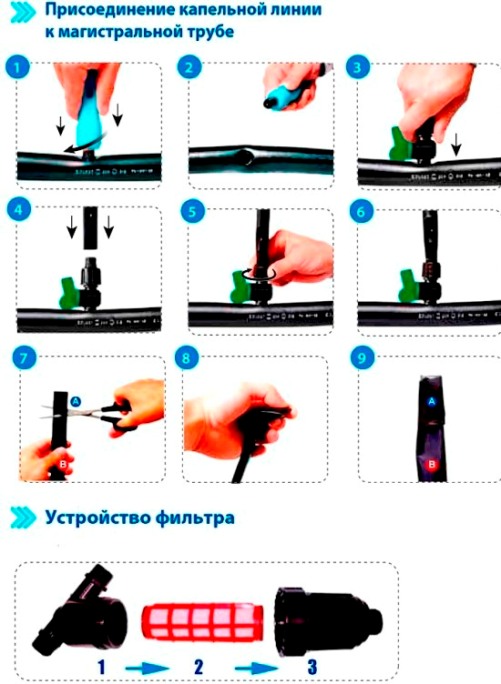
The finished hole inserted seals and fittings. For a tight connection of the pipe may be preheated with a hair dryer. It then connects to the water sources. At the same time we must not forget to install the filter. Tube is washed to get rid of chips, trapped in it during drilling, and to put an end to its cap.
To the finished pipe is connected to the drip tape is already built in in it droppers (article section "Installation droppers") and carefully unfolds along the beds. At the ends is placed the plug or they overlap with the help of wire.
The sequence of operation:
- counting a dilution tube;
- drilling holes;
- inserting into the pipe fittings;
- connection to the water supply;
- flushing pipe;
- installation droppers;
- drip tapes to the connection pipe and its layout;
- setting caps;
- a trial run of the system.
If you come to the creation of the drip irrigation system is responsible - to provide it with all the necessary details and a quality mount, it will last for years and will be indispensable in the area.
new comments
Add a comment
To send a comment you need authorize.



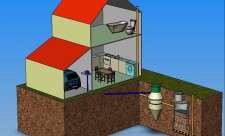
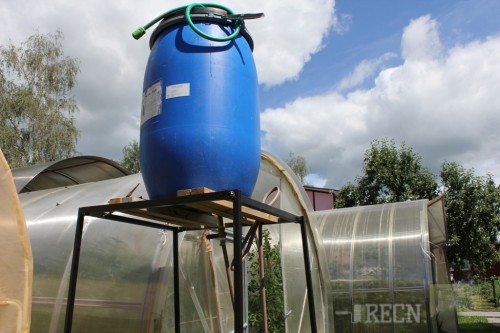
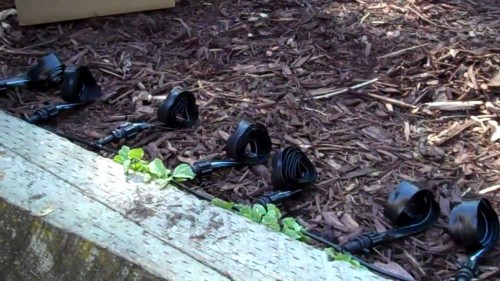


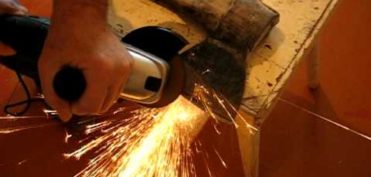
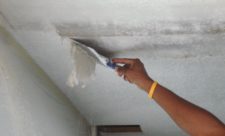
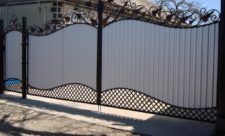
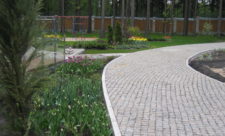









Thank you, finally dopetril more or less. I do not stau might do the calculations as I do not know something to start in the water because the pressure may be different, measure it to me nothing. I will be watered a little bit and see how it's like my tomatoes. Will not be enough - add!
Reducer and gauges to help, nothing complicated!
Use compensated dripper